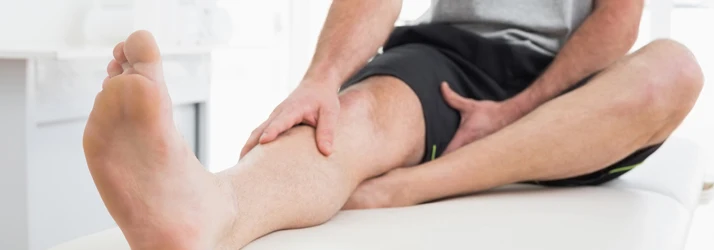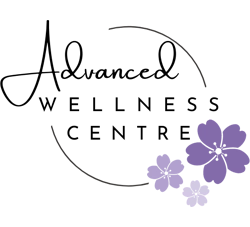Hip, Quad, Hamstring, ITB IN Ottawa ON

We meet so many people with hip and leg pain. Many people struggle to find the cause of the pain and discomfort without the expertise of health professionals diagnosing the underlying cause(s). Not only can the pain be located anywhere above the knee to the low back, but the pain in and around the hip can be caused by numerous factors that can be at the hip joint itself or many of the surrounding tissues. Problems with the muscles, nerves, bones, joints, blood vessels, and other soft tissues can all result in pain and discomfort in the hip area.
Hip Pain
The hip is a ball-and-socket joint formed by the femur (thigh bone) and the acetabulum (socket in the pelvis). It is surrounded by muscles, tendons, ligaments, and cartilage, all of which can be sources of pain. Sometimes diseases that affect other joints in the body—such as osteoarthritis or fibromyalgia or Ehlers Danlos syndrome—can be the cause of hip and leg pain. Trauma can cause hip pain including falls, running/sports injuries, car accidents, and repetitive stress work-related injuries. Pain in the hip area may even originate from painful infections or other conditions of the skin, such as shingles.
Accurate diagnosis of hip pain often requires a thorough evaluation. This may involve physical examination, imaging tests (X-rays, MRI, CT scans), and more.
Treatments for hip pain, leg pain, and IT band pain depend on the underlying cause of the pain, tightness, or stiffness.
Pain in the hip can come directly from the hip joint itself or it may be experienced in the hip joint as a referred pain from a problem somewhere else. Referred pain is pain that travels along a nerve, and all of our nerves come from the back and spine. The sensation of referred pain is felt in an area where the nerve travels or ends, but not necessarily from the point of the back where the nerve is being pinched. Some hip pain that comes directly from the hip joint can be from inflammation due to injury (Sprains, strains, and fractures), arthritis, infection, or in rarer cases, bone cancer.
The treatment goals differ depending on if the issue is acute or chronic. For an acute hip injury, the first thing to manage is to reduce the swelling. After the swelling is reduced, the next steps would help to restore mobility and return the proper function of the hip joint and leg. The treatment of a chronic hip condition is to first determine the cause(s) of the hip joint pain or discomfort, relieve or eliminate that cause, and rehabilitate the hip motion and strength.
Common Causes of Hip Pain:
Hip pain is a common complaint that can affect people of all ages. It can be caused by a variety of factors, including underlying medical conditions, injuries, overuse, or wear and tear on the hip joint.
- Arthritis: Osteoarthritis, rheumatoid arthritis, and other forms of arthritis can cause hip pain due to joint inflammation and cartilage degeneration.
- Injuries: Hip fractures, strains, sprains, and other traumatic injuries can lead to hip pain.
- Overuse: Repetitive activities or overuse of the hip joint can result in conditions like tendinitis or bursitis.
- Muscle imbalances: Weak or tight muscles around the hip can cause pain and discomfort.
- Nerve compression: Conditions like sciatica, where the sciatic nerve is compressed, can radiate pain down the hip and leg.
- Hip impingement: A structural problem where the hip bones do not fit together properly, leading to friction and pain.
- Infections or tumors: Though less common, infections and tumors can also cause hip pain.
Common Symptoms of Hip Issues:
- Pain in the hip joint, groin, buttocks, or outer thigh.
- Stiffness and reduced range of motion in the hip.
- Swelling or tenderness in the hip area.
- Difficulty walking or bearing weight on the affected hip.
- Radiating pain down the leg.
Preventing Hip Pain
Maintaining a healthy weight, staying physically active, practicing good posture, and avoiding overuse or excessive strain on the hip joint can help prevent hip pain. Maintaining strength in the legs as we age helps to prevent falls, which are a common cause of hip issues. True hip pain (pain from the hip joint itself) can be caused from an acute (usually accident related) or a chronic (usually arthritis related) condition.
Treatment
It's important to consult a healthcare professional if you experience persistent or severe hip pain, as early diagnosis and treatment can lead to better outcomes and improved quality of life. They can help determine the cause of your hip pain and recommend an appropriate treatment plan tailored to your specific condition.
A Chiropractor will examine you and determine if your hip pain is coming from a muscle or tendon problem, spinal or hip/knee joint issue, a pinched nerve in the spine or hip or leg, or something else.
Acute vs Chronic Hip Problems
Hip problems whether acute or chronic can both benefit from supportive care. Proper exercise, stretching, nutrition, and support can all aid in your recovery and enhance your functionality. The goal is to stay active but not create pain in the joint. Pain generally goes hand in hand with swelling and swelling leads to bone loss in the joint (osteoporosis) create calcium deposits around the tendons and joint (tendinitis and arthritis) and reduces mobility. Your chiropractor will work with you with several recommendations to help you maintain mobility while minimizing joint irritation.
Chronic hip pain requires proper history, examination, and diagnosis to determine a course of treatment. A chiropractor can perform these procedures and will recommend a suitable treatment program for your condition.
Natural Solutions for Chronic Hip Pain
Hip Pain can be helped by:
- Massage
- Physical therapy
- Chiropractic
- Acupuncture
- Acupressure
- Red Light & Laser Treatment
- Rest for some hip issues and
- Stretching/Strengthening/Movement for other hip issues
Iliotibial Band Syndrome (ITBS), IT Band Syndrome, ITB Syndrome
Iliotibial Band Syndrome (ITBS), also known as IT Band Syndrome, is a common overuse injury that affects the iliotibial band, a thick band of connective tissue that runs from the hip to the outer part of the knee. ITBS is a prevalent cause of knee pain in runners and other athletes who engage in repetitive leg movements. Main symptoms include:
- Lateral (outer) Leg and Knee Pain: pain can range from a mild ache to sharp pain along the side or the leg and side of the knee. Movement might be restricted and activities might bring on pain.
- Swelling: Some individuals may experience swelling around the knee.
- Tenderness: There may be tenderness over the lateral epicondyle of the femur, which is the bony point on the outer part of the knee and along the side of the leg.
Are You At Risk For Iliotibial Band Syndrome?
Iliotibial band syndrome happens most commonly in distance runners. But it may also happen from other sports, like cycling, skiing, rowing, or soccer.
If you're a runner, you might be more likely to develop iliotibial band syndrome if you:
- Run on uneven or downhill terrain.
- Run in worn-out shoes.
- Run many miles per day.
- Have legs that slope a little inward from your knee to your ankle (bowlegged).
- Run in cold weather.
- Slip on wet, icy, or downhill terrain
What Causes Iliotibial Band Syndrome?
A medical professional can diagnose ITB syndrome through a physical examination and by discussing your symptoms and activity history. Imaging tests like X-rays or MRI are typically not needed for diagnosis, as ITBS is a soft tissue issue.
Certain activities are risk factors for ITBS:
- Repetitive Friction: ITBS is primarily caused by the repetitive friction of the iliotibial band as it rubs against the outer part of the knee joint. This can lead to irritation and inflammation of the band.
- Overuse: Activities that involve repetitive bending and straightening of the knee, such as running, cycling, and hiking, can increase the risk of ITB syndrome.
- Muscle Imbalances: Weakness or tightness in the hip and thigh muscles can contribute to ITBS. These imbalances can affect the mechanics of the hip and knee joints, leading to increased friction on the iliotibial band.
- Misalignment of the Knee Joint: Misalignment of the knee joint can indeed contribute to IT Band (Iliotibial Band) issues. The iliotibial band is a thick band of connective tissue that runs along the outer side of the thigh, from the hip to the outer part of the knee. When the knee joint is misaligned, it can alter the mechanics of the leg, leading to increased stress and friction on the IT band, which in turn can result in IT band issues such as ITB syndrome.
- Nerve impingement: A pinched nerve at the level between the fourth and fifth lumbar vertebrae can cause referred pain in the hip and IT band area. The hip joint will ache or burn or may even experience sharp pain. When the pain signal originates in the back, bending the spine to one side may relieve the pain or pressure while bending the spine to place more pressure on the nerve may worsen it, and bring on radiating pain down the leg.
Iliotibial Band Syndrome Treatment:
- Rest: Reducing or stopping the activities that aggravate the condition is often the first step in treatment.
- Ice: Applying ice to the affected area can help reduce inflammation and pain.
- Acupuncture and Physical Therapy: An orthopedic acupuncturist and physical therapist can work with you to resolve muscle imbalances, provide stretching and strengthening exercises, and improve biomechanics to alleviate strain on the iliotibial band.
- Chiropractic care: Chiropractors can provide soft tissue work and align the joints of the spine, hips, knees, and ankles, as well as provide stretching and strengthening exercises.
- Footwear and Orthotics: Proper footwear and orthotic devices can help improve foot and leg alignment, reducing stress on the IT band.
- Gradual Return to Activity: Once symptoms improve, a gradual return to physical activities is advised to avoid recurrence.
- Anti-Inflammatory Medications: Nonsteroidal anti-inflammatory drugs (NSAIDs) may help manage pain and inflammation and be recommended by your medical/sports doctor.
- Pain Medication and Corticosteroid Injections: In some cases, a healthcare provider may recommend prescription pain medication and/or corticosteroid injections to reduce inflammation by their doctor if all other options have not helped the hip pain.
- Surgery: In severe and persistent cases of ITB syndrome that do not respond to conservative treatments, surgery may be considered as a last resort.
Prevention and Reducing Symptoms at Home
Preventing ITB syndrome involves proper warm-up and cool-down routines, maintaining flexibility and strength in the hip and thigh muscles, using appropriate footwear and equipment, and paying attention to changes in training intensity and terrain.
If you suspect you have ITB syndrome or are experiencing persistent knee pain, it's important to consult a healthcare provider for a proper evaluation and guidance on treatment and prevention.
Your Knees and Ankles Can Cause Painful Hips and Iliotibial Bands
Here's how misalignment of the knee joint, especially when walking or running, can play a role in hip and IT Band issues:
- Increased Friction: The iliotibial band passes over the lateral epicondyle of the femur, which is the bony bump on the outer part of the knee joint. When the knee is misaligned, such as being in a position of valgus (knock-knee) or varus (bowleg), it can cause the IT band to rub excessively against this bony prominence. This repeated friction can lead to irritation, inflammation, and pain.
- Altered Biomechanics: Knee misalignment can affect the overall biomechanics of the lower limb. When the knee does not track properly, it can lead to abnormal stress distribution along the leg and hip. This can, in turn, cause the IT band to bear more load than it should, contributing to overuse and strain.
- Muscle Imbalances: Knee misalignment can be associated with muscle imbalances around the hip and thigh. Weakness or tightness in these muscles can exacerbate the misalignment issue and increase the strain on the IT band.
- Pain Patterns: Knee misalignment-related IT band issues typically manifest as pain on the outer part of the knee. This pain may worsen with activities that involve bending and straightening the knee, such as running, cycling, or walking.
What Can I Do to Prevent Iliotibial Band Syndrome?
In some cases, iliotibial band syndrome is preventable. To help prevent a flare-up, take care to:
- Run on even surfaces.
- Replace your running shoes regularly.
- Ease up on your training.
- If you run on a track, make sure you run in both directions.
- Have an expert check your stance for running and other sporting activities.
- Stretch your outer thigh and hamstrings regularly.
- If you're new to exercise, start slowly and gradually increase your activity.
- Ask your healthcare provider or trainer if they have additional advice.
Dancer's Hip, Snapping Hip Syndrome
Dancer's hip, also known as snapping hip syndrome, is a condition characterized by a snapping or popping sensation in the hip joint during certain movements. It is often seen in dancers, athletes, and individuals who perform repetitive hip movements. Snapping hip syndrome can be painless for some people, while others may experience discomfort or pain associated with the snapping sensation.
People who have a pop, click, or a snap in one or both of their hips with specific movements have snapping hip syndrome or dancer’s hip. Some people's hips make an audible click when they bend at the hip. For other people, hip snapping can be seen, and their hip muscles visibly shudder with certain movements. Still others may feel a popping or "catching" in their hip joint without sound but have a restricted range of motion. Often hip snapping is harmless, but occasionally these conditions can sometimes lead to joint damage and/or pain. If it’s painful, it’s a good idea to seek out a health professional.
There are typically two main types of snapping hip syndrome:
- Internal Snapping Hip (Intra-articular): This type of snapping hip occurs when a structure inside the hip joint causes the snapping sensation. It is often due to the movement of the iliopsoas tendon or the labrum (a ring of cartilage that surrounds the hip socket). Patients may feel a snapping or popping sensation deep within the hip joint, often in the front of the hip. Pain may or may not accompany the snapping sensation. Movements that can trigger internal snapping hip include hip flexion (lifting the thigh toward the chest), such as during kicking or high stepping. People with this internal snapping hip syndrome may experience hip popping when running or when the hip rotates outward. They may also feel hip popping accompanied by a sharp, sudden pain at the front of the hip, deep within the groin, or pain that worsens with activity. Often, repeated irritation causes the tendon to become inflamed and there can be a gradual onset of pain that gets worse with more activity.
- External Snapping Hip (Extra-articular): This type of snapping hip occurs outside the hip joint and is typically caused by the iliotibial band (IT band) or the gluteus maximus muscle sliding over the greater trochanter (the bony prominence on the side of the hip). Patients may feel or hear a snapping or popping sensation on the outside of the hip. Pain is often felt when the IT band or gluteal muscles snap over the greater trochanter. Movements that can trigger external snapping hip include hip flexion and extension, as well as abduction (moving the leg away from the body) and adduction (bringing the leg back toward the body).External snapping hip syndrome is often associated with painful tenderness at the outside of the hip and might be diagnosed as hip bursitis or trochanteric bursitis or tight IT band syndrome.
Additionally, a snapping might be due to a cartilage injury called a labral tear can cause a snapping sensation deep in the hip joint area. This snapping hip may develop suddenly and be caused by a fall or other trauma, and often has a feeling like the hip is “catching” with some limited range of motion in the hip.
When Should I Call My Healthcare Provider?
If your symptoms don't improve after a week or two, call us and plan to see your healthcare provider soon.
Your Quads and Hamstrings
When at the gym, you’ll see many people doing squats and leg presses to strengthen their quadriceps and hamstring muscles. Tight quadriceps and hamstrings can cause hip and knee problems, as well as soreness in the front, side, and back of the thigh.
These big muscles are heavy lifters and often need warming up and cooling down, as well as health professionals to maintain strength, range of motion, and performance in athletes.
Quadriceps (quads) and hamstring injuries are common among athletes and individuals who engage in physical activities that involve running, jumping, heavy lifting, or sudden changes in direction. These injuries can range from mild strains to more severe tears and can significantly impact mobility and athletic performance.
Here's a quick overview of quad and hamstring injuries, along with some treatment options.:
Hamstring and Quadriceps Injuries:
The most common injury is a Quad Strain or Hamstring Strain.
A quad strain occurs when one or more of the quadriceps muscles in the front of the thigh is stretched or torn. It often happens during activities that involve sprinting, jumping, or kicking. The most common initial symptoms are pain, swelling, and weakness in the front of the thigh. The severity of the strain can range from mild to severe.
A hamstring strain is a common injury that occurs when the muscles at the back of the thigh (the hamstring muscles) are overstretched or torn. It often happens during activities like sprinting, jumping, or sudden accelerations. Pain, tenderness, and sometimes a popping or snapping sensation in the back of the thigh. The severity of the strain can range from mild to severe.
The most common treatments for a mild quad and hamstring strains are:
- Rest: Avoid activities that worsen the pain.
- Ice: Apply ice to reduce swelling and pain.
- Compression and elevation: Use a compression bandage and elevate the leg.
- Physical therapy: Stretching and strengthening exercises can help in the recovery process.
- Chiropractic: for stretching and strengthening and joint alignment
- Massage: to move lactic acid and reduce tension in the muscles.
- Acupuncture: orthopedic acupuncture, motor point and dry needling are all used by professional athletes to help speed up healing times and shorten recovery times.
- Anti-inflammatory medications: Over-the-counter NSAIDs can help manage pain and inflammation.
- Gradual return to activity: Resume activities slowly once the injury heals.
Severe Injuries:
In some cases, quad and hamstring injuries can be severe, involving a complete tear of the muscle or tendon. These may require surgical intervention, especially for athletes or individuals with high physical demands. Surgery may involve repairing the torn muscle or tendon and is often followed by an extensive rehabilitation program.
To reduce the risk of quad and hamstring injuries, it's important to:
- Warm up properly before exercise or sports activities.
- Stretch regularly to maintain flexibility.
- Strengthen the muscles of the thigh and hamstring through targeted exercises.
- Use proper technique and form during sports and exercises.
- Pay attention to fatigue and avoid overexertion.
Most professional and serious athletes use a team of health professionals to keep them in top shape and peak performance. Health professionals like physiotherapists, chiropractors, acupuncturists, sports medicine specialists, massage therapists and others can be helpful for both prevention and recovery of hip and leg problems. Prompt and proper care can help ensure a smoother recovery and minimize the risk of recurrence.
Monday
4:00pm - 6:00pm
Tuesday
11:00am - 2:00pm
3:30pm - 6:00pm
Wednesday
11:00am - 2:00pm
3:30pm - 6:00pm
Thursday
11:00am - 2:00pm
Friday
Closed
Saturday
12:00pm - 3:00pm
Sunday
Closed
Advanced Wellness Centre
200 Metcalfe St Main Floor
Ottawa, ON K2P 1P7
SMOKE FREE
Please do not smoke within one hour of your appointment.
SCENT FREE
Please keep the air we share fragrance and scent-free.
FREE PATIENT PARKING
Evenings after 5:30pm, Weekends & 3 Reserved Spots in front.




